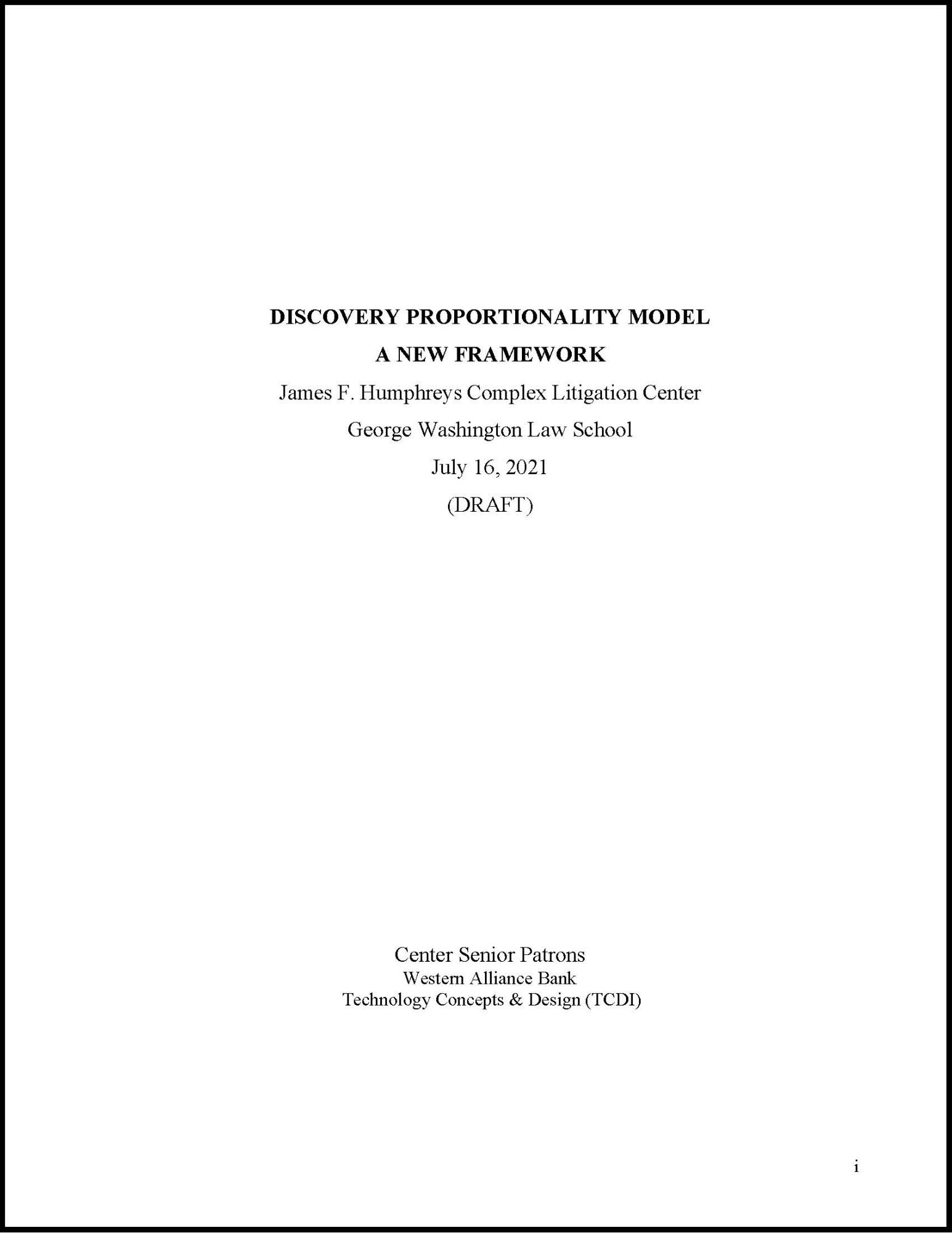Humphreys Complex Litigation Center Publications
As part of its mission, the Center publishes best practices and other guidance addressing issues and problems identified and reviewed at its conferences and other programs. The work is produced by volunteer judges and lawyers under the Center’s aegis with assistance from its scholars’ council. Every publication is thoroughly vetted and published for a period of 6 to 8 weeks for public comment.
After every class-action and mass-tort MDL conference, best practices will be drafted addressing issues raised at the conference. These best practices will become part of two separate compendia on class actions and mass-tort MDLs, which will be augmented annually.
Diversity and Excellence: Guidelines and Best Practices for Judges Appointing Lawyers to Leadership Positions in MDL and Class Action Litigation
(3-Page Summary Report and Signatories List)
The Center issued the Inclusivity and Diversity Guidelines and Best Practices on March 15, 2021. They offer concrete suggestions for giving lawyers across the profession an equal opportunity to be appointed to MDL and class action leadership positions. More than 100 law firms, five major bar organizations, and five companies support the Inclusivity and Diversity Guidelines and Best Practices as "Founding Signatories." The Center is accepting new signatories for the next 12 months. Please send your request to be included as a "Signatory" to at humphreyscenter law [dot] gwu [dot] edu.
law [dot] gwu [dot] edu.
Class-Action Best Practices
The Center sought public comment on a preliminary draft addressing class-action issues, which propose five general guidelines and best practices implementing them.
Questionnaire Regarding MDL and Class-Action Work Assignments
The Center sought public comment on a preliminary draft Inclusivity and Diversity in Work Assignments Questionnaire in class actions and MDLs.
Discovery Proportionality Model: A New Framework (July 16, 2021)
The Center sought public comment on the July 2021 draft of the New Framework. These comments have been incorporated in a significantly revised edition released for public comment on January 2022. The updated draft added sections that account for all pertinent Rule 26(b)(1) proportionality factors and clarified that the model is primarily a tool for the producing party.





